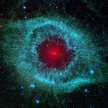Cosmos and Existence
I write easy-to-understand stories about the universe and life.

British spelling.
Here are six of my short-form stories. Enjoy.
<><>
Oxygen Changed the Life on Our Planet.

An adult human inhales about 11,000 litres of air daily, 21% of that intake is oxygen.
We use some of that oxygen to sustain our lives; body cells rely on it for energy and growth.
If we go far back into the Earth’s history, we find little or no oxygen in the atmosphere or the oceans.
Long before the great oxidation event, microorganisms were living on the surface of our planet.
One of the most important was Cyanobacteria because they evolved a way of taking energy from sunlight (photosynthesis), and the by-product of that process is oxygen.
Regarding life, the arrival of oxygen was the most important thing to happen to our world.
This new element triggered the evolution of far more complex life forms, including you and me.
<><>
Apollo 11. It Was a Very Exciting Time.

Over 50 years have passed since Neil Armstrong said those famous four words, “The Eagle has landed.”
I remember looking up at the moon on July 20, 1969. I could hardly believe that two men were walking on its surface.
I felt so lucky to have been the age to witness and understand that great event and felt so proud of the human race for what they had achieved.
As Neil Armstrong and Edwin Aldrin travelled down to the moon’s surface in the lunar module, a third astronaut, Michael Collins, waited for them to return as he circled the moon in the command module.
It must have been a very long, worrying day for Michael, as there was a chance that he would be going home alone.
<><>
Just An Illusion.

When viewing the Moon and the Sun from Earth, they appear the same size.
We get proof of this when the Moon covers the Sun at the time of a total solar eclipse.
But why do they look the same size?
The Moon’s diameter is 3,475 kilometres, but the Sun’s diameter is 1,392,680 kilometres.
The Moon is 384,400 kilometres from the Earth, but the Sun is almost 150 million kilometres.
The Moon is closer and the Sun is farther away, but by sheer chance, the Sun is roughly 400 times wider and 400 times farther away than the Moon.
This won’t always be the case, as the Moon is very slowly drifting away from our planet.
There will come a time when a total solar eclipse will be impossible, the moon will be visibly too small to cover the whole of the sun.
<><>
Is Blind Faith Enough?

Should we need factual evidence to believe in God?
According to the Bible:
The Universe and the Earth are roughly 6,000 years old.
Adam and Eve were created by God less than 6,000 years ago. They were the first humans on Earth.
Methuselah, the son of Enoch, lived for 969 years.
Modern Thinking:
According to independently cross-validated geochronological methods, including radiometric dating, the Earth is over 4.5 billion years old, and the Universe is estimated to be 13.8 billion years old.
Scientists believe bacterial life existed on our planet 3.5 billion years ago. Our presence today is the result of a long evolutionary process that has unfolded over that immense time.
The longest verified human lifespan is of Jeanne Louise Calment, a woman from France who lived for 122 years.
What are your thoughts?
<><>
You Could Say We're a Little Odd.

Yes, surprisingly, we do lay eggs.
We monotremes share this magical world with well over 5,000 other species of mammals.
Our five species are the duck-billed platypus, eastern long-beaked echidna, western long-beaked echidna, short-beaked echidna, and Sir David's long-beaked echidna.
Because we don't give birth to live young, we are classified as monotremes - the only mammals that lay eggs.
The only places you will find monotremes in the wild are in Australia or New Guinea.
What is a mammal?
Well, to start with, you are one. A mammal is an animal that breathes air and has a backbone, and all female mammals have milk-producing glands.
The lightest mammal is the Etruscan shrew, and the heaviest is the blue whale, the largest animal that has ever existed.
The end.
<><><>
About the Creator
Unravelling the Universe
We can only imagine what our early ancestors thought as they gazed up at the night sky—were they curious about what the heavens had to hide?
Enjoyed the story? Support the Creator.
Subscribe for free to receive all their stories in your feed. You could also pledge your support or give them a one-off tip, letting them know you appreciate their work.






Comments (2)
Nice! Lots of great info - it will be about 3 billion years before solar eclipses end, assuming no weird unforeseen event.😳
Great! This is fascinating! Fantastic read! Well written! 🌌🪐